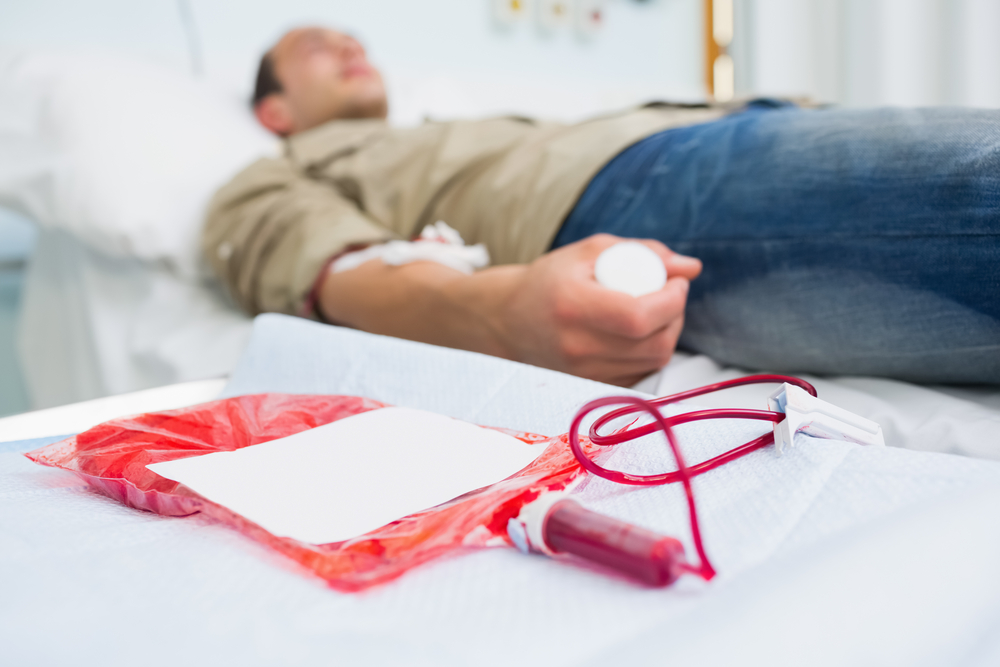Spectra Optia Device Save Way to Treat Sickle Cell While Using Less Blood Cell Packs, Study Finds
Written by |

The blood-separation device Spectra Optia, which has the ability to remove abnormal red blood cells from sickle cell patients, can efficiently and safely replace these cells with healthy red blood cells from donors, a study reports.
The therapeutic tool also uses less red blood cell units than regular transfusion techniques, i.e., without the removal of abnormal red blood cells (RBCs).
The study, “Automatic depletion with Spectra Optia allows a safe 16% reduction of red blood cell pack consumption in exchanged sickle cell anemia patients,” was published in the journal Transfusion.
Sickle-cell anemia results from an abnormality in the oxygen-carrying protein hemoglobin found in red blood cells. Cells become sticky and rigid, with a sickle or crescent moon shape, and are prone to getting trapped in small vessels, stopping the blood from circulating and causing painful vaso-occlusive crisis.
Sickle cell patients’ clinical status can worsen abruptly, and individuals are at risk of stroke and organ damage. Acute and chronic transfusions of RBCs are often necessary in such crises to prevent such injury.
Several studies have shown the efficacy of regular red blood cell exchange — the removal of abnormal RBCs coupled with transfusion of healthy RBCs — in preventing complications.
The increasing use of prophylactic (preventive) red blood cell exchange requires blood transfusion centers to store a large variability and high number of blood types for blood matching between patients and donors.
But members of racial and ethnic minority groups, “for a variety of reasons,” are often infrequent blood donors, the study notes, and the need exists to reduce the number of transfused red blood cell packs used during a red blood cell exchange protocol without compromising effectiveness.
Removal of sickle red blood cells can be achieved using a cell separator device, such as the Cobe Spectra, but studies have shown that its use can be complicated in ways that lessen its accuracy.
Cobe Spectra has since been replaced by the Spectra Optia system, by Terumo BCT, the first device to include a completely automatic removal (depletion) of RBCs.
The device replaces patients’ own sickle red blood cells with a transfusion of healthy cells designed to reach predicted and physician set post-exchange values for red blood cell count and mean fraction of RBCs remaining (FCR) – meaning the percentage of the original RBCs remaining in the patient’s body at the procedure’s end. A more efficient red blood cell exchange produces a lower FCR, which translates into lower post-treatment levels of abnormal hemoglobin and a greater volume of RBCs exchanged.
The performance of Cobe Spectra and Spectra Optia is similar, but uncertainty remained as to the number of red blood cell packs saved using the Spectra Optia device (with the automatic depletion step).
A team of investigators in France compared the number of packs saved between Spectra Optia (with the automatic RBCs’ removal step), and Spectra Optia or the Cobe Spectra device without such protocol step.
Researchers also tested the performance and clinical tolerance of the Spectra Optia (with the automatic depletion step) on 300 red blood cell exchange sessions across 50 sickle cell anemia patients (92% adults; 32 men and 18 women).
All enrolled subjects were involved in a chronic red blood cell exchange program, which required six sessions a year.
Results showed the Spectra Optia (with the automatic RBCs’ removal step) protocol to be safe, well-tolerated and efficient in exchanging RBCs, achieving the desired final red blood cell count and FCR.
A significant decrease in blood pressure and increase in heart rate (moderate adverse events) occurred in 5% and 17% of the Spectra Optia sessions, respectively.
“Of note, when performing [Spectra Optia with the automatic RBCs removal], 60% of the episodes of increase in heart rate occurred during or at the end of the depletion step, suggesting that this step has to be carefully supervised,” the researchers noted.
Spectra Optia (with the automatic RBCs’ removal step) used 16% less red blood cell packs than the Spectra Optia without depletion, which translated to a mean savings of 12.6 red blood cell packs per patient and per year.
The Spectra Optia with depletion protocol also required 13% less red blood cell packs in comparison to the Cobe Spectra system.
Higher total blood volume, pre-protocol RBC count, and, to a lower extent than the previous two parameters, higher post-exchange RBC values were independently associated with higher red blood cell pack savings.
These results suggest that using Spectra Optia (with RBC depletion) in sickle cell patients is clinically safe and allows for red blood cell pack savings, important given the possibility of a short supply of donated blood.
“Transfusing fewer RBCPs [red blood cell packs] while preserving the safety and treatment of SCA [sickle cell anemia] patients will be an important therapeutic goal in the next few years before developing specific treatments that could definitively cure the genetic abnormality causing SCA,” the researchers concluded.





